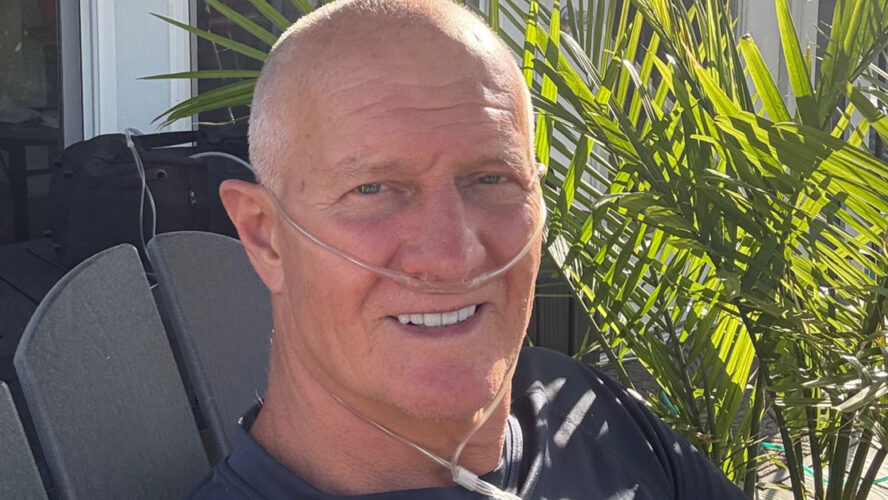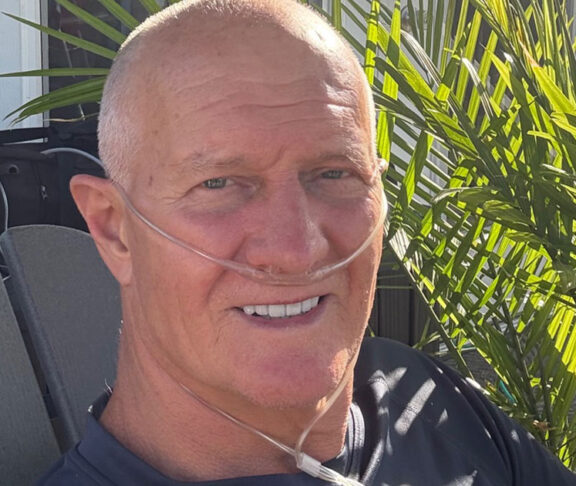Ironman triathlete Lee Fogle faced a devastating pulmonary fibrosis diagnosis and found purpose again through community, rehab, and resilience.
In 2020, technology executive and Ironman triathlete Lee Fogle was struck by COVID-19 and two bouts of pneumonia. The illnesses left him struggling to breathe and led to a devastating diagnosis — pulmonary fibrosis, a progressive and debilitating lung disease that affects more than 250,0000 Americans. Doctors told him he had severe scarring in his lungs and may only have two to three years to live.
Fogle was placed on supplemental oxygen to help him breathe. With just 30% lung function, he couldn’t walk more than 50 feet without needing to stop and rest. He slipped into a year-long depression.
Then, he began to fight back.
The power of support
Through pulmonary rehabilitation, a return to his meditation practice, and the connection of a virtual support group, Fogle found a new sense of purpose. He calls it a second life.
“I decided I wasn’t going to accept a death sentence,” he says. “It’s a flywheel — you have to keep it turning to keep going.”
The support group, he says, was especially important. It offered not only connection but also perspective.
“We start every meeting with two questions: What are you navigating, and what are you celebrating?” Fogle explains. “Even though we’re all facing serious lung disease, we spend more time talking about what we’re celebrating. We’re like a family; we know each other’s struggles.”
Fogle also decided to focus on what he could control — exercise, sleep, nutrition, and breath training.
“All we can do is make the best of what we have,” he says.
He acknowledges how overwhelming it is to face a diagnosis like pulmonary fibrosis, but he urges others not to be discouraged by reports of disease prognosis found online.
“Don’t just Google it and assume the worst,” he advises. “Start pulmonary rehab. Get used to moving and monitoring your oxygen levels. Connect with the Pulmonary Fibrosis Foundation and learn everything you can about living with this disease. Evaluate your treatment options with your doctor. Most importantly, surround yourself with people who want to live fully, despite the diagnosis.”

